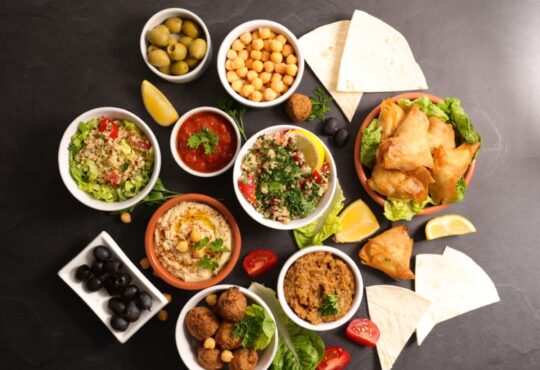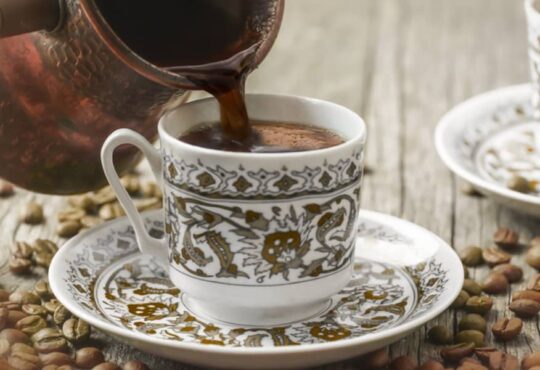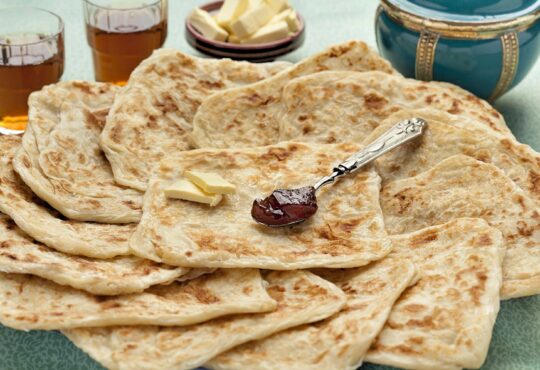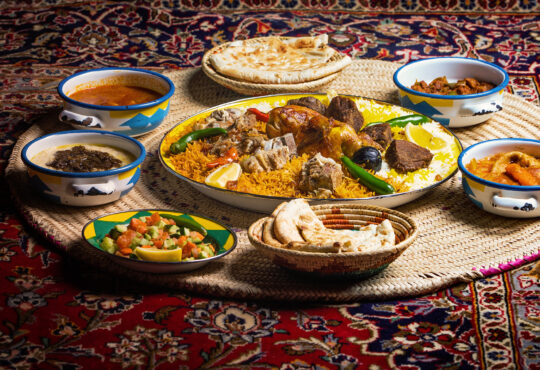335
Moroccan cuisine is known for its exotic and flavorful aromas. These aromas are due in large part to the exciting range of spices used in many Moroccan dishes. Herbs and spices are very important in Moroccan cuisine, with each dish often requiring a unique blend of several different spices.
On a given trip to the Marrakech spice souk, you will find an array of stalls selling all kinds of spices from ground ones to whole pods and everything in between. A trip to the spice market in Morocco is a sensory overload with all the different colors, textures, and smells.
In this post, I will take you through the most common Moroccan spices used in Moroccan cooking. However, the best way to learn about these spices is to take a cooking class in Morocco so you can see (and smell!) them in action!
Disclaimer: Please keep in mind that we may receive a commission when you click on our links and make a purchase. This, however, has no bearing on our reviews.
Ras El Hanout literally means the head of the shop in Moroccan Arabic. So, what is Ras El Hamout? It’s basically a blend of different spices that can be found in a Moroccan spice shop.
Some people say that it’s named that way because the merchant only chooses the best spices in his blend. The blend recipe is a family secret that’s passed down from generation to generation. Every spice merchant has its own unique blend recipe for Ras El Hanout.
Moroccan spice blend_Ras El Hanout
Ras El Hanout can contain over 30 different spices! The most common spices in Ras El Hanout include cumin, cardamom, cloves, cinnamon, nutmeg, mace, allspice, aniseed, ginger, chili peppers, coriander, and many more.
This exotic Moroccan spice is praised for its ability to transform a simple dish into an extraordinary one. Ras El Hanout is commonly used to marinate meats and make spice-up chicken dishes.
Can’t get Ras El Hanout from Morocco? Learn how to make the blend at home.
Being one of the world’s most expensive spices, Saffron is certainly not a daily ingredient in Moroccan households.
Saffron is usually used only on special occasions such as weddings and Eid celebrations. This spice is used to flavor and color different dishes such as chicken tagine with preserved lemons and olives and, lamb tagine with prunes.
Saffron is also used to flavor Moroccan mint tea and some other Moroccan desserts and sweets.
The most authentic Saffron can be bought from gold shops in Morocco as it’s usually sold in very small quantities. $5 worth of Saffron can go a long way as you only need a few strands to flavor an entire dish!
Tumeric is the cheaper and more commonly used alternative to Saffron. This yellowish spice is used to add color to almost all tagines, whether it’s chicken, lamb, fish, or vegetable tagine.
Turmeric is also used in making harira soup, a traditional Moroccan tomato soup made with chickpeas, and lentils.
If you intend to use Turmeric in your cooking, use just a small amount as it can give your dish a very bitter taste if you use too much.
Freshly ground cumin is a must in every Moroccan kitchen. This spice has a strong and distinct flavor that can be easily recognized in many Moroccan dishes.
Cumin is used to flavor vegetarian dishes such as lentil soup and chickpea soup. It also pairs very well with meat, as it’s used in the famous Moroccan Tanjia dish. Moroccans also use cumin to flavor their breakfast eggs.
Used in both forms, fresh and dry, ginger is a very popular spice in Moroccan cuisine. This spice has a strong and spicy flavor that goes very well with meat. Ginger is also one of the key ingredients in the well-known Moroccan spice blend, Ras El Hanout.
Moroccan dishes are known for their vibrant colors and paprika is one of the spices that contribute to that. This spice is used to add beautiful red color to a dish.
I’m not sure whether paprika is used to add flavor as well or not, but I’ve never really noticed a strong paprika flavor when I use this spice in my cooking.
The paprika spice found in Morocco is made of dried and ground sweet red peppers.
Black pepper is used to add a kick of heat and flavor to Moroccan food. It’s used in almost every savory dish, whether it’s a soup, tagine, or couscous.
Moroccan food is not known to be very spicy, so you won’t find black pepper to be very potent in most dishes.
There is also another type of pepper known as white pepper, which is not as common as black pepper. White pepper is usually used for medicinal purposes rather than cooking.
Cinnamon is used in both savory and sweet dishes in Morocco. This spice is commonly used to flavor lamb tagines, Bastila, a traditional Moroccan pastry filled with nuts and chicken, and many other dishes.
Cinnamon can be used in its powder form or in its whole form (stick). Cinnamon sticks are usually added to Tagines while the powder form is used to flavor sweets and desserts.
Knorr is an industrial bouillon cube brand that’s very commonly used in Moroccan cooking. While it’s not technically a spice, Moroccans use it in almost every savory dish to add flavor. For example, Moroccan Harira soup would not be the same without Knorr.
Knorr comes in different flavors such as chicken, beef, vegetable, Saffron, and Smen (salted fermented butter). I usually use the chicken flavor as it goes well with most dishes.
This spice has a very potent anise flavor and is used sparingly in Moroccan cuisine. Aniseed is usually used to flavor sweets and desserts such as Sellou and Shebbakia.
Along with Zaatar, Bay leaves are used in Morocco to enhance the flavor of meat and fish. Bay leaves are often sold in spice shops in loose branches sometimes completely dry and sometimes still fresh.
To use, simply let them dry, break the leaves, and store them in a jar. And to use bay leaves in your cooking add one bay leaf to your dish while cooking. You can remove it before serving if you want, but I usually just leave it in.
Harissa is a Moroccan red spicy paste that is made of roasted red peppers, garlic, chili peppers, olive oil, and spices such as cumin and coriander. Although Harissa seems easy to make at home, Moroccans prefer to buy it pre-made from spice markets and local shops.
The paste is usually used as a condiment but it can be used to spice up some dishes like roasted chicken or Tanjia. Harissa is also great when added to sandwiches.
Used only on special occasions, nutmeg is one of the many spices that are used in the Moroccan spice blend, Ras El Hanout.
In Morocco, a nutmeg seed is usually grated on top of the meat when preparing a dish for special guests. Nutmeg is known for its very warm and strong flavor and that’s why it’s used sparingly.
In addition to being great in tea, coriander is sometimes used in Moroccan recipes. I personally like to sprinkle some za’atar onto my Kefta ground meat for an exotic flavor.
While Coriander powder is not as common in Moroccan cuisine, coriander fresh or dry leaves are something that you may like to purchase in Morocco. You can use it to flavor your soups, fish dishes, and salads.
You can also dry it and grind it to make your own Moroccan coriander powder.
You may also like:
Was this post useful? Support my work by sharing it on Pinterest and other social media platforms





